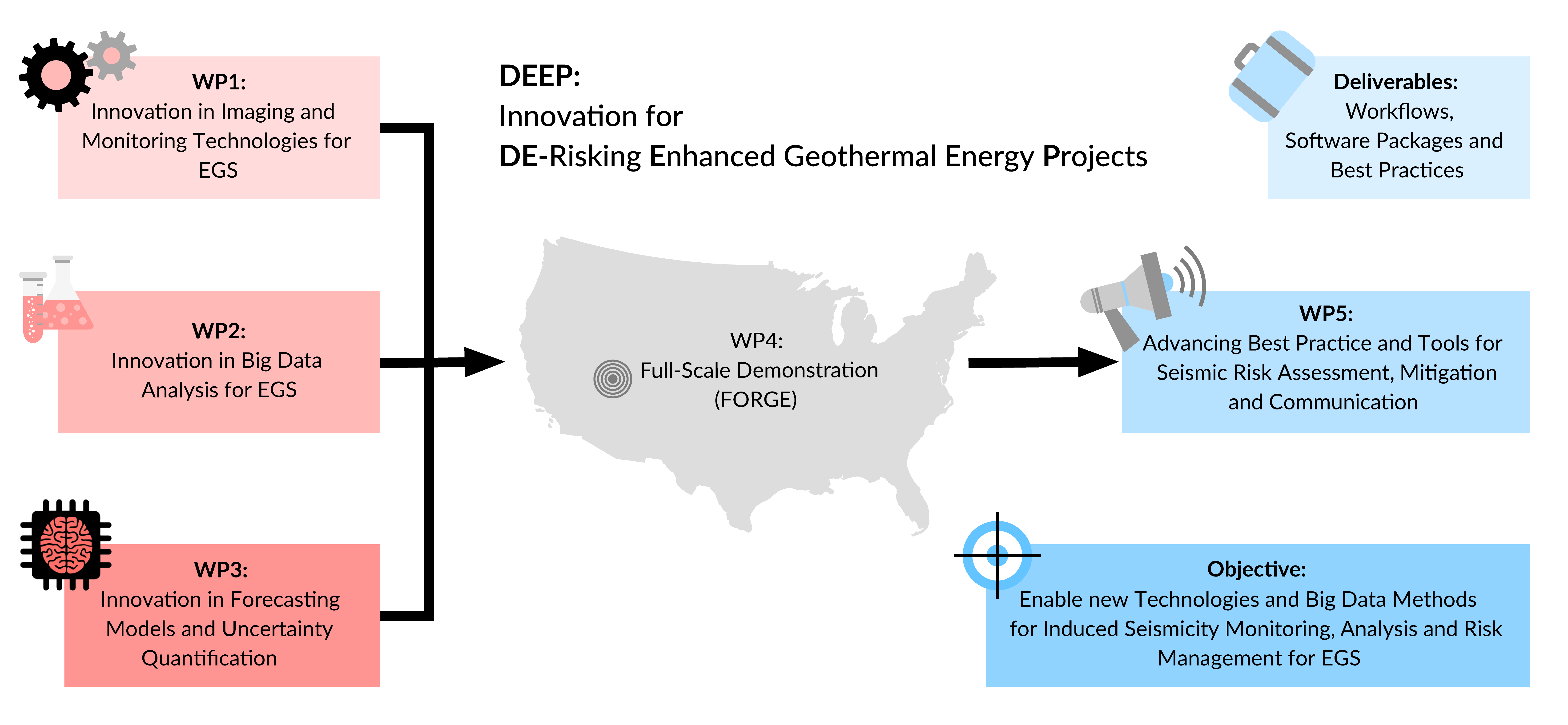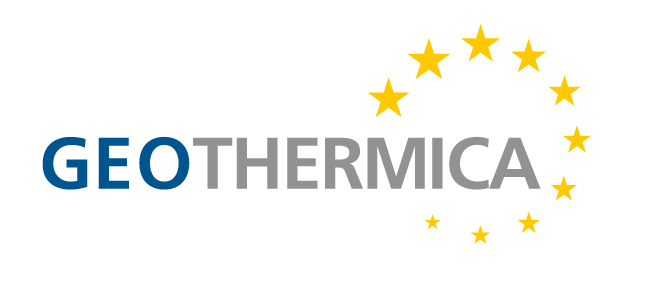DEEP in Brief
Enhance Geothermal Systems (EGS), unlike the conventional hydrothermal geothermal systems, exploit geothermal resources through hydraulic stimulation that enhances permeability of the reservoir for creating a heat exchanger. Induced seismicity is thus not an undesired by-product but a necessary tool to create a heat exchanger in crystalline basement rock. The vast majority of these earthquakes are so small, often called micro-earthquakes, that they are not noticeable to the public. The art of successful EGS stimulation lies in creating an economically viable heat exchanger in the deep underground, while avoiding larger and potentially damaging earthquakes. Thus, especially in urbanized areas deep geothermal resources can be only exploited using EGS technology if induced seismicity is adequately managed and controlled. The failures of past projects, such as the ones in Basel (Switzerland, 2006) and Pohang (South Korea, 2017) illustrate that existing and upcoming geothermal projects such as the Haute-Sorne Project in Switzerland will need to present innovative answers to the challenges related to induced seismicity and convincingly demonstrate more reliable procedures to assess and control the seismic risk.
Balancing risk and economic output is therefore key requirement and DEEP has a strong focus on optimization of monitoring and risk assessment procedures in order to reduce commercial costs and enhance safety of future projects. DEEP will establish for full-scale EGS systems a real-time demonstration of innovative seismic processing, seismicity forecast modelling and adaptive risk assessment using so called Adaptive Traffic Light System (ATLS), a fully probabilistic seismic hazard and risk study that is updated continuously as new data arrive.
The conceptual development and partial test of ATLS started already in the context of the COSEIMIQ and DESTRESS projects. Within DEEP, these efforts will continue and refocus on the specific needs of an EGS operation, exploiting the unique opportunities of the Utah FORGE, an international field laboratory established to provide a controlled environment, where researchers in the field can develop, test, and optimize EGS technologies.

